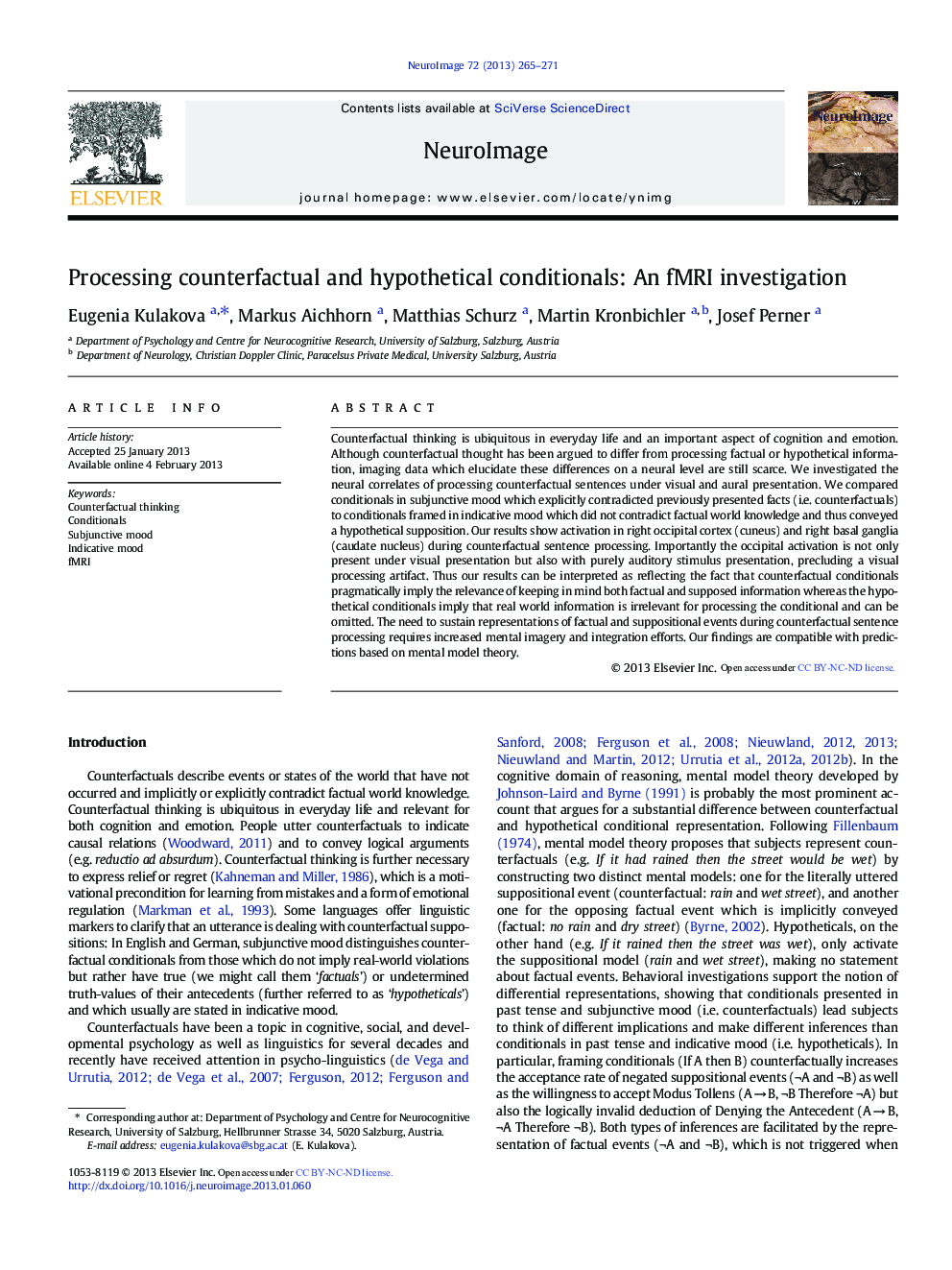| Article ID | Journal | Published Year | Pages | File Type |
|---|---|---|---|---|
| 6029734 | NeuroImage | 2013 | 7 Pages |
Counterfactual thinking is ubiquitous in everyday life and an important aspect of cognition and emotion. Although counterfactual thought has been argued to differ from processing factual or hypothetical information, imaging data which elucidate these differences on a neural level are still scarce. We investigated the neural correlates of processing counterfactual sentences under visual and aural presentation. We compared conditionals in subjunctive mood which explicitly contradicted previously presented facts (i.e. counterfactuals) to conditionals framed in indicative mood which did not contradict factual world knowledge and thus conveyed a hypothetical supposition. Our results show activation in right occipital cortex (cuneus) and right basal ganglia (caudate nucleus) during counterfactual sentence processing. Importantly the occipital activation is not only present under visual presentation but also with purely auditory stimulus presentation, precluding a visual processing artifact. Thus our results can be interpreted as reflecting the fact that counterfactual conditionals pragmatically imply the relevance of keeping in mind both factual and supposed information whereas the hypothetical conditionals imply that real world information is irrelevant for processing the conditional and can be omitted. The need to sustain representations of factual and suppositional events during counterfactual sentence processing requires increased mental imagery and integration efforts. Our findings are compatible with predictions based on mental model theory.
⺠Neural correlates of processing counterfactual conditionals were investigated. ⺠We presented sentences in auditory and visual modality. ⺠Counterfactuals show stronger activations in cuneus and caudate nucleus. ⺠The findings are consistent with predictions based on mental model theory.
